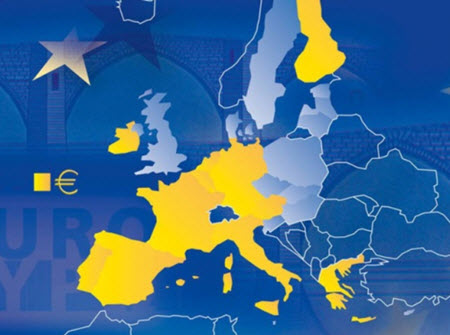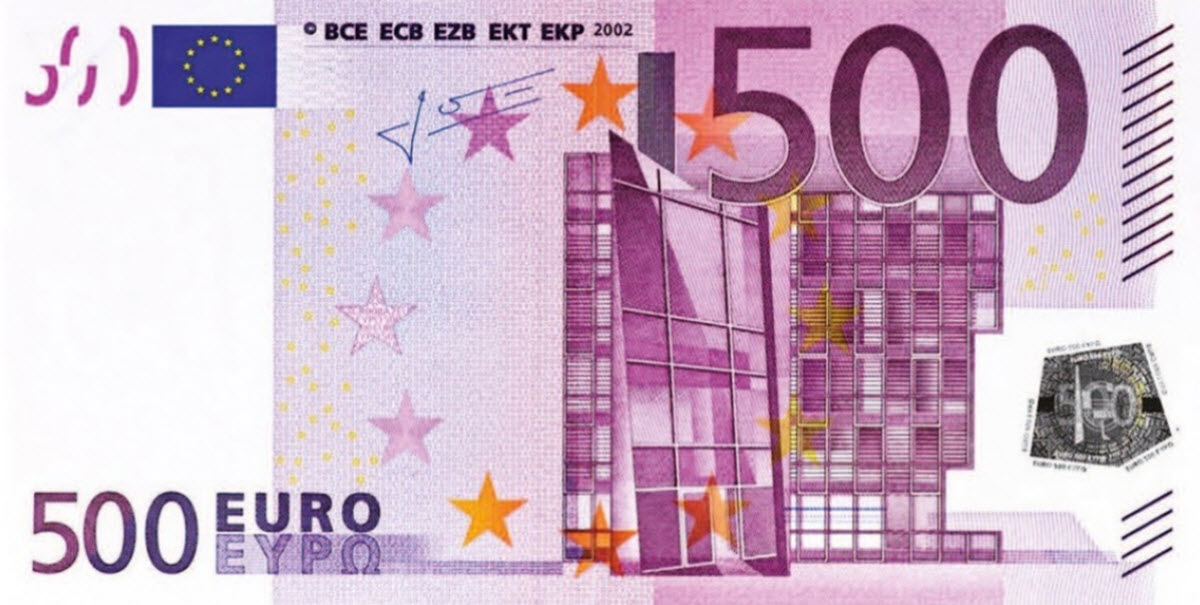At the time of writing, the euro is the official currency of 19 of the 28 member states of the European Union. Collectively, these 19 states are known as the eurozone. In 2019, the eurozone had over 340 million citizens.
On the global forex market, the Euro is the second most traded currency by value.
Most traded currencies by value (April 2016):
| Rank | Currency | % of daily trades (bought or sold) in April 2016 |
| 1 | United States dollar | 87.6% |
| 2 | Euro | 31.4% |
| 3 | Japanese yen | 21.6% |
| 4 | Pound sterling | 12.8% |
| 5 | Australian dollar | 6.9% |
The euro is also the second largest reserve currency, behind the United States dollar.
The Euro has one of the highest combined values of banknotes and coins in circulation of all currencies. Data from August 2018 show that at this point, there were more than €1.2 trillion in circulation – which is higher than for the United States dollar.
The basics
Name: Euro
Sign: €
Code: EUR
1 euro consists of 100 cents.
Central bank: European Central Bank
Printers:
- Banco de Portugal
- Bank of Greece
- Banque de France
- Bundesdruckerei
- Central Bank of Ireland
- De La Rue
- Fábrica Nacional de Moneda y Timbre
- François-Charles Oberthur
- Giesecke & Devrient
- Istituto Poligrafico e Zecca dello Stato
- National Bank of Belgium
- Österreichische Banknoten- und Sicherheitsdruck GmbH
- Royal Joh. Enschedé
- Setec Oy
Minters:
- Bayerisches Hauptmünzamt, Munich (Mint mark: D)
- Currency Centre
- Fábrica Nacional de Moneda y Timbre
- Hamburgische Münze (J)
- Imprensa Nacional Casa da Moeda SA
- Istituto Poligrafico e Zecca dello Stato
- Koninklijke Nederlandse Munt
- Koninklijke Munt van België/Monnaie Royale de Belgique
- Lithuanian Mint
- Mincovňa Kremnica
- Monnaie de Paris
- Münze Österreich
- Rahapaja Oy/Myntverket i Finland Ab
- Staatliche Münze Berlin (A)
- Staatliche Münze Karlsruhe (G)
- Staatliche Münze Stuttgart (F)
The euro around the world
The Eurozone
The euro is the official currency for 19 of the 28 member states of the European Union.
- Austria
- Belgium
- Cyprus
- Estonia
- Finland
- France
- Germany
- Greece
- Ireland
- Italy
- Latvia
- Lithuania
- Luxembourg
- Malta
- Netherlands
- Portugal
- Slovakia
- Slovenia
- Spain

European microstates with monetary aggreement
The Euro is the official currency of four European microstates that are not member states of the European Union: Andorra, Monaco, San Marino, and Vatican City.
Unilateral adoption
Montenegro and Kosovo have both unilaterally adopted the euro as their official currency.
Special territories of EU members
Outside Europe, some (but not all) of the special territories of EU members use the euro as their official currency: Akrotiri and Dhekelia, Clipperton Island, Saint Barthélemy, Saint Martin, French Southern and Antarctic Lands, and Saint Pierre and Miquelon.
Zimbabwe
Along with eight other foreign currencies, the euro is legal tender in Zimbabwe, although the USD is the official currecy for all government transactions.
History
This currency was established by the provisions in the 1992 Maastricht Treaty, but the name euro wasn’t officially adopted until 16 December 1995.
The euro was introduced to the world’s financial markets as an accounting currency on 1 January 1999, replacing the former European Currency Union (ECU) at a ratio of 1:1.
The first physical euro banknotes and coins entered into circulation on 1 January 2002. This was also the date when the euro became the day-to-day operating currency of the Eurozone members.
This article was last updated on: March 13, 2019
